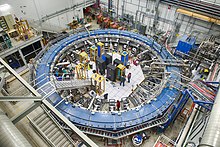0
![]() It is well known that we do not encourage/allow questions that solicit open-ended discussions or that can only be answered by providing personal opinions, etc. However, at least to me, it seems a bit unclear as to what is the policy around questions that are not ill-defined (in that there is a we...
It is well known that we do not encourage/allow questions that solicit open-ended discussions or that can only be answered by providing personal opinions, etc. However, at least to me, it seems a bit unclear as to what is the policy around questions that are not ill-defined (in that there is a we...





